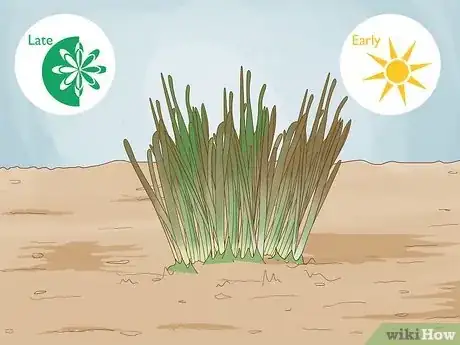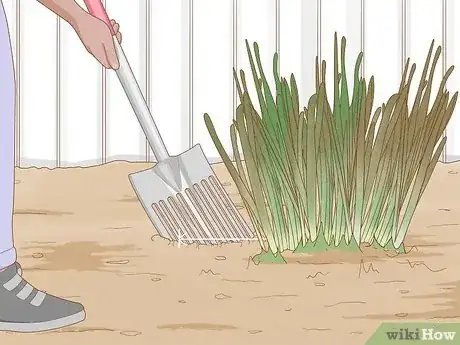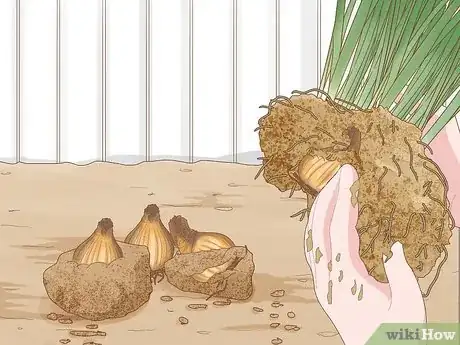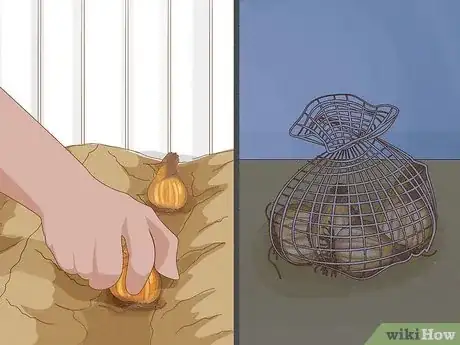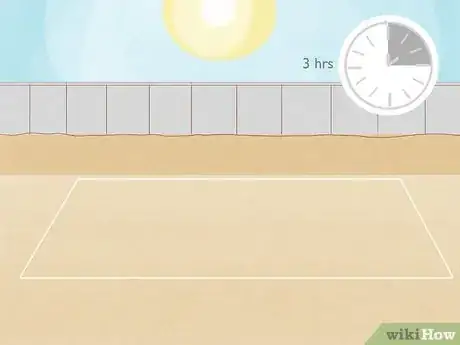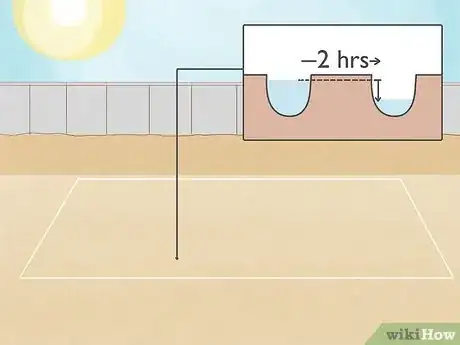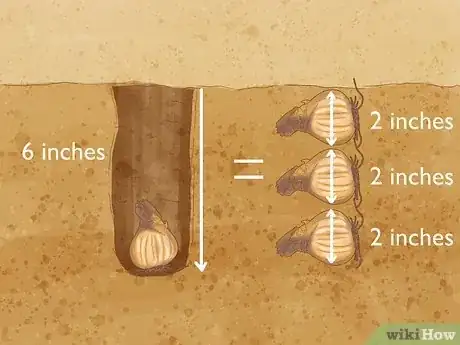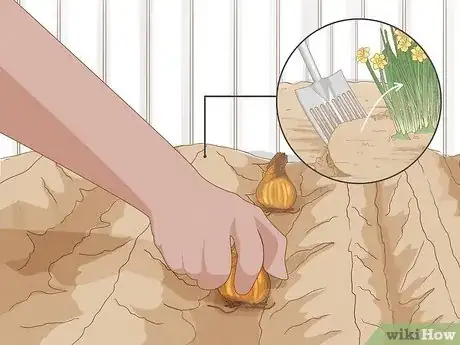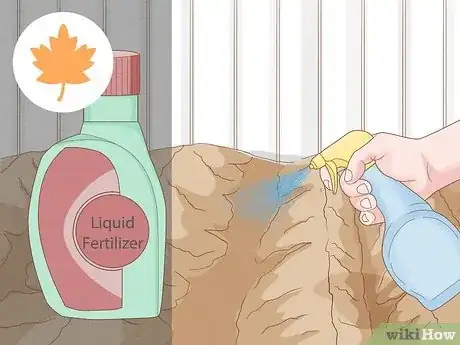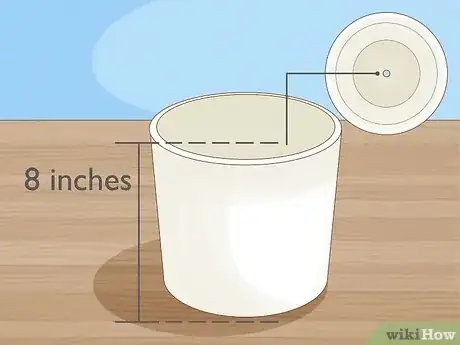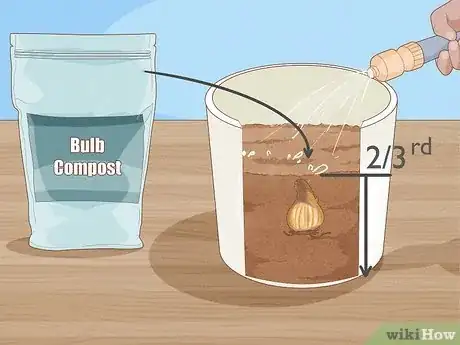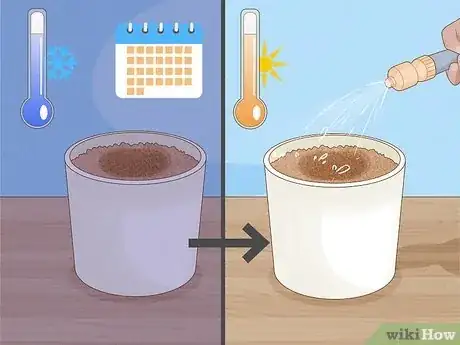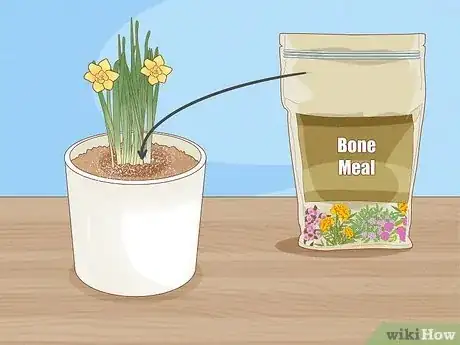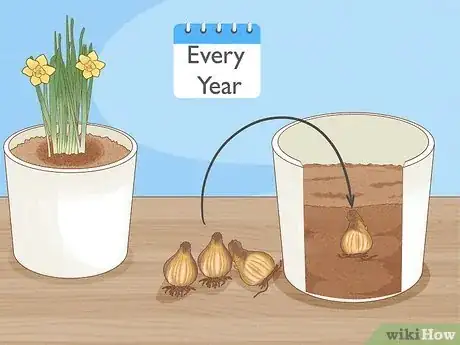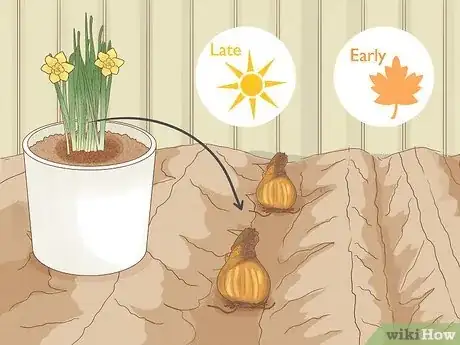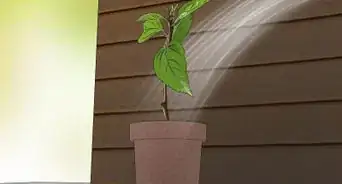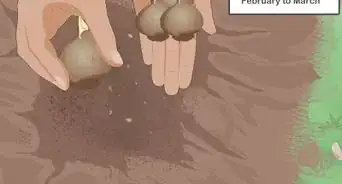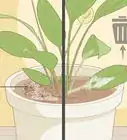wikiHow is a “wiki,” similar to Wikipedia, which means that many of our articles are co-written by multiple authors. To create this article, volunteer authors worked to edit and improve it over time.
wikiHow marks an article as reader-approved once it receives enough positive feedback. This article received 15 testimonials and 100% of readers who voted found it helpful, earning it our reader-approved status.
This article has been viewed 117,862 times.
Learn more...
After a few years, daffodils can multiply into thick clumps and get a bit too crowded. This occurs when the original single bulb multiplies into a clump of several conjoined bulbs by producing offspring that are known as ‘offsets’. This can result in fewer and smaller blooms, so it’s a good idea to thin and spread this clump out by transplanting and dividing your daffodils. It also means you can spread your daffodils over a larger area.
Steps
Dividing Daffodils
-
1Divide and transplant daffodils at the end of the growing season. Wait until the growing season is over before you begin. When the growing season is over, the foliage will wither away and turn yellow or brown. This usually happens in the late spring or early summer.[1]
- If you wait much later in the year you may not be able to find your daffodils, as the plant will be dormant and any visible signs of it hidden under the ground. Because of this, try to take action when there’s still some of the plant visible above ground.
-
2Dig up the daffodil bulbs without damaging them. Use a garden spade to dig up the bulbs, being careful to avoid damaging them. You’ll want to dig quite a long way from the plant to avoid slicing through it accidentally.[2]
- Bulbs are usually planted pretty deep, and over time daffodil bulbs can wriggle a bit lower into the soil, so expect to dig to about the depth of an average spade.
Advertisement -
3Gently separate the daffodil bulbs. Once you locate the bulb, gently part it from the earth as carefully as possible, trying not to damage any roots. Gently separate the bulb clumps by twisting and pulling them apart with your fingers. Keep as many of the divided bulbs (also known as offsets) as you want to replant.[3]
- The very smallest offsets may not flower within a year. Discard any that are damaged, mushy or show any signs of rot.
-
4Replant the daffodil bulbs as soon as possible. It’s best to replant the bulbs fairly quickly if you can, although they should be fine for several weeks out of ground if delay is unavoidable. Store any bulbs you aren’t planting immediately in a cool dry place.[4]
- One ideal way to store them is in a paper bag in a dark corner of a garden shed.
Transplanting Daffodils Outdoors
-
1Find a sunny spot in the garden to replant the daffodils. Find a new spot in the garden for your divided daffodil offsets. They will prefer a sunny patch, although they’ll tolerate partial shade for some of the day. A daffodil plant needs to receive at least three hours of sunlight per day.[5]
-
2Plant the daffodil bulbs in well-drained, composted soil. Daffodils need a well-drained soil, so try to avoid planting them anywhere that puddles form and don’t easily drain away. Daffodil bulbs rot easily in wet ground.[6]
- It’s a good idea to incorporate plenty of compost or organic matter, such as well-rotted horse manure, into the soil. If you aren’t sure how much to use, cover your soil to a depth of 2 to 4 inches (5.1 to 10.2 cm) with the manure and then mix it with the existing soil.
- If your soil is clay heavy and tends to retain water, you might may want to add some grit into the soil to improve drainage.
-
3Plant each bulb in a hole three times as deep as the width of the bulb. To plant each bulb, dig a hole three times as deep as the bulb is wide—that’s around 6 inches (15.2 cm) in depth for a 2 inch (5.1 cm) bulb.[7]
- If you can, add a trowel full of compost to the bottom of the hole for the bulb to sit on. Put the bulb in the hole with the pointed end facing upwards.
- Fill the hole with soil and water well. You might like to top-dress (add a top layer) of fertilizer or mulch.
-
4Plant any remaining bulbs back in the original location. Now go back to the area where your bulbs were growing originally and replant the bulbs using the same approach. Having such a crowd of bulbs in this patch may have taken a lot of the nutrients from the soil, so it’s especially important to refresh the ground with fertilizer in this spot.
-
5Feed the transplanted bulbs with a water-soluble fertilizer. In the fall, give your transplanted bulbs a good feed with a water-soluble fertilizer. During the fall the roots are most actively growing, so the fall feeding will help your transplanted bulbs get established in their new home. All bulbs will appreciate an annual top dressing of fertilizer or mulch.
Transplanting Daffodils Into a Container
-
1Plant daffodil bulbs in a deep pot with good drainage. You can also move daffodil offsets to a container. Try to choose a deep pot to give their roots plenty of room (at least 8 inches). The pot should have drainage holes.[8]
-
2Use bulb compost or regular potting compost. Bulb compost or regular potting compost will work well for daffodils in pots. Fill the pot so that it is about two-thirds full, and plant the bulbs pointed end upwards. The bulbs should be close but not touching. Cover the bulbs with soil and water the pot.[9]
-
3Keep the pot in a cool, dark spot for the first few months. Move the container to a cool dark spot such as a shed or cellar for a few months rather than bringing it into a warm home. Continue to water it and bring it out into a warmer, lighter place after about three months.
- It’s best not to put containers of daffodils in a warm location as this inhibits flowering.
-
4Fertilize potted daffodils with bone meal. After flowering, top dress your container with a fertilizer such as bone meal (this is pretty stinky so you may not want to keep it in the house!).
-
5Replant fresh bulbs each year. Daffodils should survive three years in a container but won’t be as good after the first year. For best results, plant the spent bulbs outside after the foliage dies back and replant your container with fresh bulbs for the following flowering season.
-
6Transplant daffodils from a pot to the ground. Indoor planted daffodils and those previously planted in containers can be moved to the outside for planting in the ground. The best time to do this is after they flower and when the foliage has died back. This will typically be in the late summer or early autumn.
- Follow the steps outlined in Method 1 to transplant your daffodil bulbs.
Community Q&A
-
QuestionCan I transplant bulbs in February after they have started to grow?
 Community AnswerIf they haven't bloomed you can, but you don't want them to waste energy on growing roots and settling into their new homes before they bloom. The best time is after the leaves turn yellow in late spring/early summer.
Community AnswerIf they haven't bloomed you can, but you don't want them to waste energy on growing roots and settling into their new homes before they bloom. The best time is after the leaves turn yellow in late spring/early summer. -
QuestionHow do I plant potted daffodils directly into a garden?
 Community AnswerDig a hole in the garden. Place the rootball into the hole. Cover the hole and water it.
Community AnswerDig a hole in the garden. Place the rootball into the hole. Cover the hole and water it. -
QuestionWhat do I do if my daffodils didn't come up? Can I dig up the bulbs and replant them? Are they done for?
 Community AnswerThe success rate of daffodils is around 90%. Daffodils are very hardy. They may not bloom the first year, but give them a chance to do so once they're established after the first year.
Community AnswerThe success rate of daffodils is around 90%. Daffodils are very hardy. They may not bloom the first year, but give them a chance to do so once they're established after the first year.
Warnings
- Daffodils fare well and look good when planted under grass but you will need to avoid mowing the lawn in that area until late summer when the foliage withers away. If you cut back the foliage too soon after flowering, you will deprive the plant of the ability to gain energy from sunlight. It needs this energy to survive the dormant stage over winter and thrive the next year.⧼thumbs_response⧽
References
- ↑ https://www.brecks.com/blog/moving-dividing-daffodils
- ↑ http://www.birdsandblooms.com/gardening/flower-gardening/transplanting-perennials/
- ↑ https://www.youtube.com/watch?v=atQ7-3s39kw
- ↑ https://hoosierhomemade.com/how-to-divide-and-replant-daffodil-bulbs/
- ↑ https://www.almanac.com/plant/daffodils
- ↑ https://www.almanac.com/plant/daffodils
- ↑ https://www.almanac.com/plant/daffodils
- ↑ https://www.gardenia.net/guide/planting-daffodils-in-pot-and-containers
- ↑ https://www.gardenia.net/guide/planting-daffodils-in-pot-and-containers
About This Article
It’s best to transplant daffodils when growing season is over in late spring or early summer. Carefully dig up the bulbs and plant them 6 inches deep in a well-drained mix of soil and compost. If you’re planting them outdoors, put them in a sunny spot. Or, if you’re planting them indoors, keep them in a cool, dark spot for the first 3 months so they don't flower too soon. After 3 months, move the daffodil bulbs to a sunny spot near a window. During the fall, mix some soluble fertilizer into their water to give them a boost of nutrients. For more tips, including how often to plant fresh daffodils, read on!
